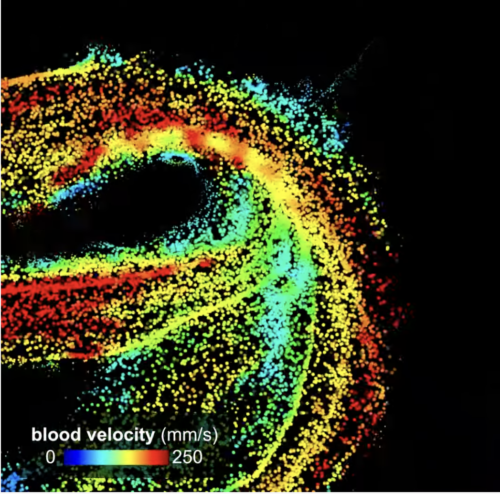Everyone at Iconeus is thrilled to have received part of a €5 million EU grant to develop a clinically-applicable successor to our existing ULM technology for high-resolution imaging of microscopic blood vessels in the brain.
After lot of research and preparation, a major effort to submit the grant proposal, and four tense months of waiting, we’re delighted to announce that we’ve been awarded part of a €5 million grant from the European Innovation Council (EIC) to fund a project to develop our ultrasound localization microscopy (ULM) technology so that it can be used for clinical applications.
Ludovic Lecointre, Pharm.D., CEO and co-founder of Iconeus, says: “We’re all very excited to have received this massive injection of funding from the EIC, which follows just two years after we received EU funding as part of the PREMSTEM project. We believe that, by combining the resolution of ULM with the broad applicability of our regular functional ultrasound technology, it stands to be a game-changing development in brain imaging for studying cerebrovascular diseases in humans”.
Developing functional ultrasound localization microscopy
ULM is currently available as an option for our Iconeus One functional ultrasound (fUS) system, and works by imaging intravenous microbubbles in the brain at thousands of frames per second, which allows it to achieve a resolution as low as 5 µm in rodents, and quantify blood velocities in the mm/s range. The result is amazingly detailed images of the brain microvasculature, and the ability to track individual microbubbles as they travel through the brain’s blood vessels.
In the new project, named ‘MICROVASC’, we plan to develop a ‘functional ULM’ (fULM) system that will improve the temporal resolution from current values of about 60 s to less than 1 s, enabling us to map brain activity and connectivity in real-time, in the same way that we can do currently with our regular fUS setup. The main differences will be that the new system will be applicable to the whole brains of human subjects, with the high resolution of ULM being retained (we’re expecting a spatial resolution of about 25 µm in humans).
In contrast, many brain imaging modalities are restricted to a resolution of 0.1 mm at best, while others fail to completely capture the blood flow dynamics, which limits quantitation of functional vascular information. With fULM, we’re hoping to completely dispense with these limitations, and so provide a powerful new tool for neurovascular disease researchers.
Technical challenges and applications
The new project will involve developing prototype fULM scanners both for preclinical research and for clinical proof-of-concept acquisitions in humans. To achieve whole-brain scans within a second or so, we plan to use an arrangement of highly sensitive ultrasound probes embedded in a helmet. But there are numerous challenges, not least the distortions induced by the human skull bone at the ultrasonic wavefront, and imaging artefacts arising from respiration, vessel pulsatility and patient movement. However, by drawing on the broad expertise of our partners and of course the team at Iconeus, we think these challenges can be overcome within the five-year project timeframe!
The potential applications of fULM could be wide-ranging, but once the technology is developed, we’ll be planning to test it on four monogenic disorders of small blood vessels, with a focus on visualizing how capillaries adapt over time to meet changes in metabolic demands caused by these conditions.
Europe-wide collaboration
To bring such an ambitious project to a successful conclusion, we’ll be drawing on expertise from several partners. These are INSERM (France), Leiden University Medical Center (Netherlands), the Swiss Federal Institute of Technology Lausanne (Switzerland), the ASST ‘Ospedale Maggiore’ in Crema (Italy), and the St. Antonius Hospital Foundation (Netherlands).
The EIC, which awarded the funding, was established under the EU Horizon Europe program, and has a budget of €10.1 billion to “support game-changing innovations throughout the lifecycle from early-stage research to proof of concept, technology transfer, and the financing and scale-up of start-ups and SMEs”. We’re very happy to have been selected as part of such a prestigious funding program – it will make a really big difference to the scale of our operations at Iconeus over the coming years, and ultimately should transform the way neuroscience researchers study the brain. As Lecointre concludes: “We’re looking forward to developing fULM and seeing the research that can be done with it!”.
To get an idea of the resolution that’s possible with ULM, take a look at this amazing video from ESPCI, which shows results from a published proof-of-concept study for transcranial ULM in humans.https://www.youtube.com/watch?v=XE3VZ6sFLbo
